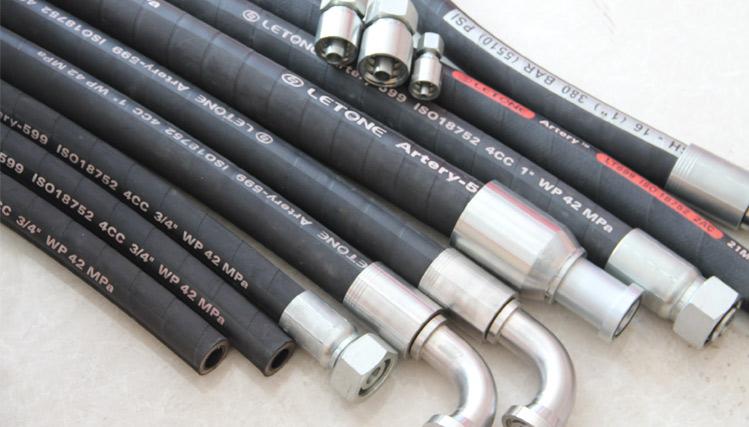Causes of impact rupture of high pressure hose
2022-07-04 17:00:13
Hose products are one of the commonly used accessories in the daily industry, but there are also various problems during use, especially when high-pressure hoses work under high pressure. After years of work experience and user feedback, let’s understand the reasons.
1. The reinforcing layer of the hose is not rusted, but there is irregular wire breakage. If the hose is broken, peel off the outer rubber layer and check that the reinforcement layer is not rusted, but there are irregular broken wires in the length direction of the reinforcement layer. The main reason is that the hose is subjected to high-frequency impact force.
2. When the rupture part of the high-pressure hose is large or about to be broken due to the action of external force or the overload of the system, the bone setting method can be adopted: wipe the rupture part of the hose clean and cut off the rupture part; insert the self-made steel "bone connection" into the cut off In the hose; use a self-made steel plate clip to clamp the hose and the "bones"; clean the connected hose and then use it
3. The hose is broken, and the braided steel wire near the break is rusted. If the high-pressure oil pipe is broken, peel off the outer rubber layer and check to find that the braided and wound steel wire near the rupture is rusted. This is mainly due to the effect of moisture or corrosive substances in the outer rubber layer, which weakens the strength of the rubber hose, resulting in rupture under high pressure.
When this happens, the outer layer is generally fractured, scratched or seriously deteriorated, so that the outer layer loses its protective effect on the reinforcement layer. At this time, unfavorable factors such as mechanical damage, chemical corrosion and high temperature baking of the outer rubber layer must be checked and eliminated first, and then the rubber tube must be replaced. However, there are also cases where the outer rubber layer is well maintained but the reinforcement layer is embroidered and ruptured, and the rupture opening is usually within 200 mm from the hose joint. Most of the reasons are that the hydraulic joint is unqualified. The reinforcing layer absorbs moisture, which leads to rust, which causes the compressive strength of the hose to decrease and rupture.